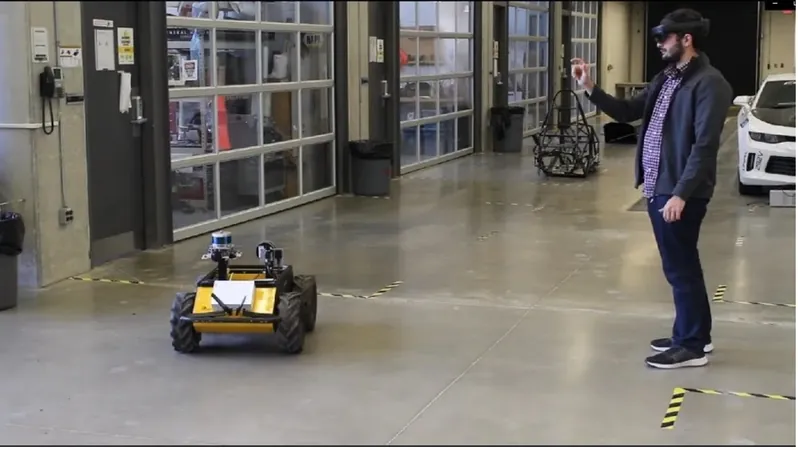
Revolutionary AR/VR Technology Extends Lifespan of Critical Infrastructure, Say UWaterloo Engineers
2024-10-08
Author: Jacob
Overview of AR/VR Technology in Infrastructure Assessment
In a groundbreaking advancement, engineers from the University of Waterloo are leveraging augmented and virtual reality (AR/VR) technologies to enhance the assessment and maintenance of Canada’s vital infrastructure. With bridges, roads, pipelines, and towers often being difficult to inspect thoroughly, traditional methods fall short in identifying hidden issues within these large structures.
Introduction of the Smart Infrastructure Metaverse
To tackle this challenge, Professor Dr. Chul Min Yeum and his team have pioneered the Smart Infrastructure Metaverse. This innovative system allows both on-site and remote inspectors to collaborate seamlessly by viewing the real structure alongside a highly detailed 3D scanned model simultaneously. This dual perspective brings forth enhanced accuracy and speed, surpassing the conventional methods of visual examination.
Addressing the Infrastructure Crisis in Canada
Canada faces an urgent infrastructure crisis, with much of its essential facilities—built during the mid-20th century—reaching the end of their functional life. The Replacement of these structures is projected to cost an astonishing $264.7 billion, posing severe public safety threats as they further deteriorate. The Smart Infrastructure Metaverse aims to address these pressing issues by integrating state-of-the-art technologies, thus extending the lifespan of these crucial assets.
Streamlined Collaboration for Inspections
"The Smart Infrastructure Metaverse is designed to streamline collaboration between on-site and off-site inspectors during structural assessments," explained Yeum. "Utilizing AR and VR headsets, both parties can share an exceptional view of the inspection site—regardless of their physical location."
Conducting Pivotal Experiments
The team, comprising Dr. Yeum and Dr. Zaid Abbas Al-Sabbag from the Department of Civil and Environmental Engineering at Waterloo, along with Dr. Sriram Narasimhan from UCLA, executed a pivotal experiment centering on a railway bridge in Kitchener, Ontario. They created a precise 3D model using advanced scanning technology, which enabled real-time tracking of the inspectors' locations and perspectives.
Combining AR/VR with AI for Enhanced Inspections
In this experiment, while an off-site engineer explored the 3D model with a VR headset—akin to navigating a VR game—on-site inspectors donned AR headsets to visualize the actual bridge and overlay digital information instantaneously. This connection allowed the off-site inspector to monitor the exact areas that on-site users focused on, ensuring the integrity of the data collected during the inspection process. To further bolster the human evaluation, artificial intelligence was utilized to analyze images transmitted from the on-site AR headsets, pinpointing structural impairments with heightened precision.
Partnership and Future Implications
This revolutionary initiative has garnered support from Rogers, as part of the Rogers-University of Waterloo Partnership, recognizing it as a prime illustration of 5G technology and mobile edge computing applications.
Conclusion and Further Reading
For those interested in the full details of this transformative research, check out the paper titled "Distributed collaborative inspections through smart infrastructure metaverse," featured in the September issue of Automation in Construction. Stay alert as this technology could change the landscape of infrastructure maintenance and your safety in the years to come!









 Brasil (PT)
Brasil (PT)
 Canada (EN)
Canada (EN)
 Chile (ES)
Chile (ES)
 España (ES)
España (ES)
 France (FR)
France (FR)
 Hong Kong (EN)
Hong Kong (EN)
 Italia (IT)
Italia (IT)
 日本 (JA)
日本 (JA)
 Magyarország (HU)
Magyarország (HU)
 Norge (NO)
Norge (NO)
 Polska (PL)
Polska (PL)
 Schweiz (DE)
Schweiz (DE)
 Singapore (EN)
Singapore (EN)
 Sverige (SV)
Sverige (SV)
 Suomi (FI)
Suomi (FI)
 Türkiye (TR)
Türkiye (TR)